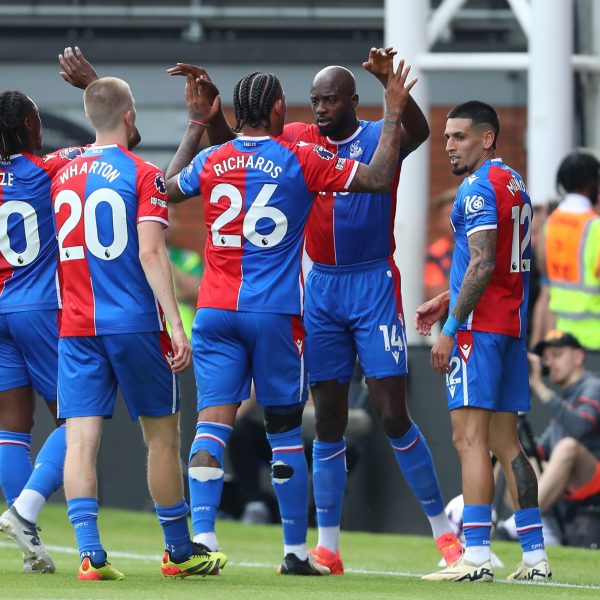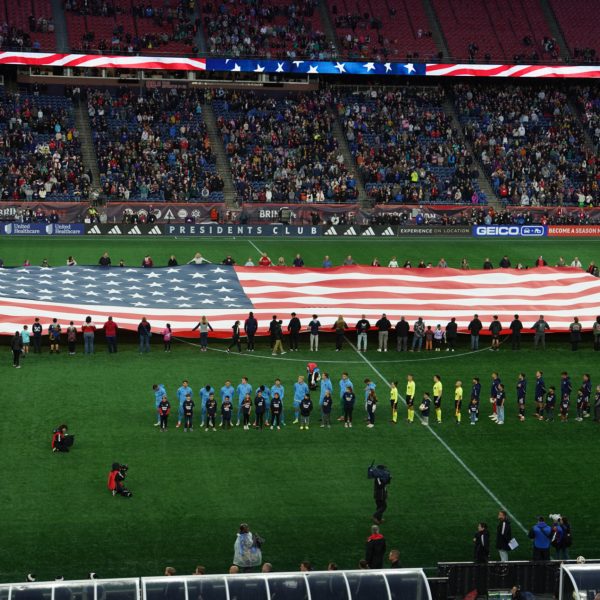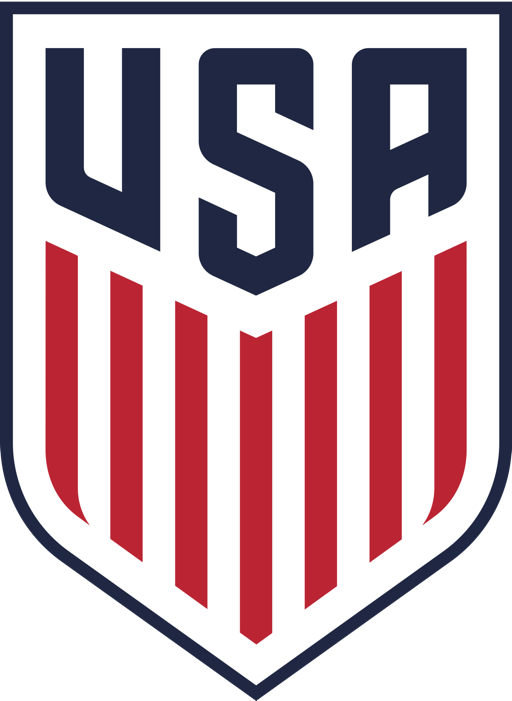A conversation with United Soccer League president Jake Edwards in advance of the start of the 2022 USL Championship season.
Jake Edwards on USL’s future
By Charles Boehm – WASHINGTON, DC (Mar 10, 2022) US Soccer Players – It feels like a new era for the United Soccer League as its top level, the USL Championship, kicks off the 2022 season this weekend with an opening-day slate of 11 matches on Saturday. Or at least the beginning of the end of a previous one.
This marks the final year in which MLS second teams will compete in the league. Atlanta United 2, LA Galaxy II, DC.s Loudoun United, and New York Red Bulls II are the last four holdouts in MLS’s shift from USL partner to de facto competitor with the launch of its new third-tier competition MLS Next Pro. Meanwhile, newcomers Detroit City, a prominent defection from the opposition NISA, and Monterey Bay make their league debuts.
While the Championship tends to garner the most attention, USL president Jake Edwards would be quick to remind you that it’s only one of many platforms across men’s, women’s, and youth soccer.
“Between the Championship and [third-tier] League One we’ve got 38 professional teams,” Edwards told USSoccerPlayers.com in a one-on-one conversation this week. “It’s about 113 teams that we’re playing in League Two [formerly known as PDL] this season, and then we’re launching the W League, getting our pre-professional, elite level on the women’s side, we’ve got 45 teams now…. And so much is going on behind the scenes now as we prepare for the Super League [women’s pro league] launch in 2023. So it’s been a very short offseason.”
That diversity of offerings might even be more central to USL’s existence than the fortunes of its uppermost and most recognized division.
“USL remains the largest, fastest-growing professional soccer organization in North America and possibly even the world, given the amount of football we are now bringing into communities that perhaps didn’t already have a football club of their own at a professional level,” added Edwards. “We’re one of the few, if not the only organizations I’m aware of in the world that can bring professional men’s and women’s football and a full pyramid all the way down to the girls and boys on the youth side, with the pre-professional in the middle.”
All of that is a welcome sign of stability as USL parts company with the topflight. The MLS-USL alliance has run its course. MLS is trying its hand at a lower division of its own. USL is increasingly confident in its own strengths and ambitions.
“The partnership really just came to a logical divergence in how we view growth moving forward,” Edwards said. “We are strong believers that you can both build a strong league and a viable league and a set of clubs that have great relevance in their communities, that are focused on winning championships, that want to bring the best possible level of football to their community, and be the best representations of their community. You can do that as well as develop players.”
The MLS second teams’ typical focus on developing young players first and foremost stood in growing contrast to the more holistic outlook of the independent teams they faced, and usually lost to, in USL action.
For its senior academy players, MLS need their own reserve league, they need their own platform. That’s what they’re launching. That will suit the needs of what they’re trying to achieve,” said Edwards. “I fully support that. It just was misaligned in terms of what we think you can do to grow the game.”
As a consequence the USL Championship has shrunk in size from its high-water mark of 36 member teams in 2019, with 27 competing this season. Pointing to the 11-team League One, Edwards asserts that this opens up space for continued expansion, rather than raising alarm bells of ebbing revenues.
“Having multiple divisions gives you those options to be able to find the right level for clubs, perhaps in a way that we haven’t had in the past. The exit of the four remaining MLS teams at the end of this season also will allow for some additional expansion in the Championship,” he said. “We’ve got those markets already earmarked, we’re working with groups in those markets and they all come with a stadium development project as well … that will reach its natural conclusion over the next couple of seasons. The real emphasis on growth will be in League One. We’ve got two new teams coming on now. We have significant expansion forecast in League One the next three seasons as well, as that becomes a two-conference league.”
USL hopes to have the current wave of expansion finalized ahead of the 2026 North American World Cup. Then, perhaps, we’ll see tangible movement on the concept of promotion and relegation between its divisions, a trial balloon floated by Edwards and others in recent years. It is not a coincidence that this contentious topic is on more USL minds now that the MLS contingent is leaving.
“It’s not the silver bullet. But it’s part of a broader strategy to take our leagues and how we think about the game and align closer to the global structure of football,” said Edwards. “I do believe there are a vast majority of football fans in this country that are not yet fully consuming domestic product, right? They’re more aligned with the structure they see around the world and leagues and clubs around the world. And we have to understand, are we delivering to our fans the right product, the right structure?”
MLS has carefully avoided that element of how most of its overseas counterparts operate. USL seemingly now sees this as a window of opportunity amid a larger effort to introduce itself to those entities abroad.
“Having played in that, I know that the excitement and the pressure it puts on players, coaches, owners, everybody. It will change how a lot of commercial and media partners think about the game as well. So for us, we’re doing the work on it internally,” said Edwards, an English-American who played the game on both sides of the Atlantic. “First you need to have the divisions, you need to have the healthy clubs, the stadiums, etc. But you also need to give teams the ambition, and fans the ambition and the opportunity. There shouldn’t be a preordained number of markets that only get to be at a certain level.”
Along comparable lines, but with a more immediate upside than pro/rel, is the growing transfer market for North American players. USL was very proud to see rising US-Mexican dual-national fullback talent Jonathan Gomez, formerly of FC Dallas’ academy, move from Louisville City to Spain’s Real Sociedad over the winter. The reported fees paid by European clubs for San Antonio FC’s Jose Gallegos and Birmingham Legion’s Junior Flemmings broke new ground for outbound sales.
“I believe since 2019, when we started the USL academy league, we’ve signed about 75 players now onto professional contracts through those respective club academy programs…. For players that perhaps wouldn’t ordinarily had that opportunity within their own hometown, they can now see a pathway through into the USL and beyond, especially into Europe,” said Edwards, noting that some three dozen of the players called up to the USMNT over the past year or so have USL somewhere on their resumes. “It is having an impact at the highest levels and our owners are now seeing that they can trade with clubs around the world and there is a marketplace for that.”
Edwards believes the prices will keep rising, whether on the domestic or international fronts.
“We’re actively building strong relationships with confederations, with leagues and clubs around the world so they are aware of the quality in the USL, that they can work with us, that we are aligned, that our clubs are structured in a way that’s more familiar, perhaps, to them,” he said. “So I think that will continue. And most of our deals are in the six figures; we’ll be breaking the million[-dollar] mark soon and it’ll just keep going from there.”
USL is also eyeing another tantalizing objective that not so long ago would have been little more than fantasy: Participation in the Concacaf Champions League. With the Canadian Premier League recently earning a spot in this tournament and the US Open Cup still the only qualification avenue for non-MLS teams in the United States absent pro/rel, its leaders see a case to make.
“We have had conversations,” said Edwards. “The Champions League continues to expand. I think that’s good. I think it’s good for the region that more participants get the opportunity and the USL Championship clubs, I think, have done what they need to do to be involved in that tournament. We’ve got the right markets, we’ve got the right clubs, we’ve got the stadium infrastructure, we’ve got quality on the field, we’ve got senior internationals playing for Concacaf countries, playing in the USL Championship. I think our teams could do well in that tournament and I think it’d be a value add for Concacaf that their brand and that tournament becomes relevant in places like Phoenix and Tampa and Louisville and Oklahoma. And I think, I hope, there will be a day soon where we can make that happen.”
Now that would be a brave new world indeed for USL.
Charles Boehm is a Washington, DC-based writer and the editor of The Soccer Wire. Contact him at:cboehm@thesoccerwire.com. Follow him on Twitter at:http://twitter.com/cboehm.






